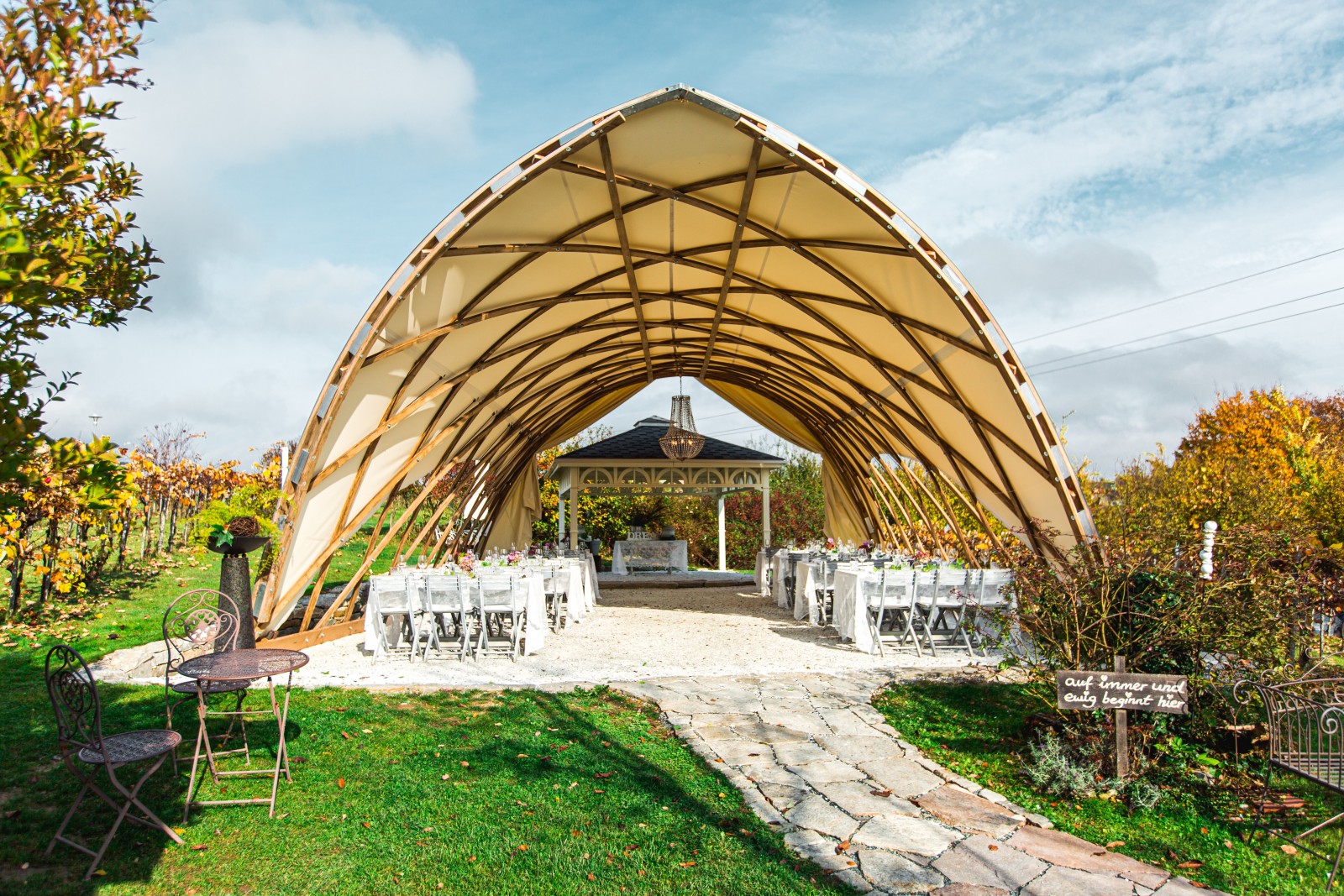There are many different interpretations of what a pergola is. Most often, however, the term pergola refers to a free-standing exterior construction that is intended to serve either as a climbing aid or as protection from the sun and rain. However, a pergola can also be similar to a terrace canopy. This type of pergola consists of two main parts – on the one hand, support columns and on the other hand, a lamellar roof design with beams and rafters. The roof lattice itself can remain both open and closed depending on individual preferences.
In some cases, pergolas are also used for the extension of the terrace or the house. Mostly, however, they are stand-alone structures.





